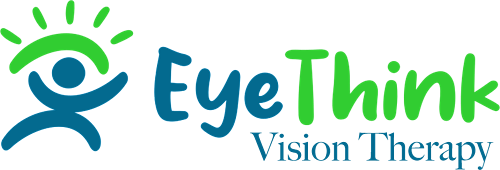In functional optometry and vision therapy, lenses are more than tools for clarity. They can shift how the brain organizes information, how the body feels, and how we connect to what we see.
About a year after my vision popped, I had another experience that completely changed how I understand the power of lenses — and deepened how I prescribe for my patients.
I was at a seminar on vision therapy and visual processing, working with my mentor, Dr. Angela Peddle. By that point, I had already discovered something important about myself.
My auditory processing is far superior to my visual processing when it comes to reading. I can get through content faster, stay focused longer, and gain more insight when I listen rather than when I read with my eyes.


When I read visually, my brain seems to shut off and my mind wanders. Since vision is supposed to be our dominant sense, that told me I still had a lot of development to do in my visual system.
During one of the seminar sessions, I was reading aloud while Dr. Peddle observed. My reading sounded a little choppy, and then she gently placed a pair of mild yoked prism lenses in front of my eyes. Immediately, something shifted. My reading became smoother and more coherent.
Here’s what fascinated me most. The lenses didn’t make the print clearer but they didn’t blur it either. The clarity stayed the same. What changed was how I processed what I was seeing. My reading became more rhythmic, more connected.
My attention steadied and my whole system felt calmer. When she later added a small amount of plus lens power, I noticed the clarity sharpen even more, and everything came together in a way that felt effortless.
What made this so interesting is that I had already been prescribing lenses like this in my clinic for quite some time. I had watched patients’ posture shift, their breathing deepen, and their reading flow become smoother. But to experience it through my own eyes to feel the difference was something entirely new.
This is what I love about functional optometry and vision therapy. The right lens doesn’t just make the world sharper. It helps the brain and body communicate more clearly. It organizes visual information in a way that supports how we think, move, and feel.
Reflection
That moment reminded me that clarity is only one part of vision. The real transformation happens when the system which are the eyes, brain, and body all begins to work in harmony. Lenses can help regulate the nervous system and bring us into a more relaxed, focused state.
Now, when I prescribe, I pay attention to more than just the letters on the chart. I notice how my patients breathe, how their shoulders settle, how their voice softens. The right prescription doesn’t just bring clarity but it brings coherence and calm.
Vision isn’t only about what you see. It’s about how your whole system experiences seeing.
Ready to Explore What Your Vision Might Be Telling You?
Schedule a comprehensive vision evaluation and experience how true, relaxed seeing can change the way you move through the world click here to know more!
Dr. Tiffany Martinez, OD
Eyes of NM Family Optometry



